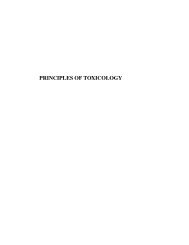Insect-pests - Biology East Borneo
Insect-pests - Biology East Borneo
Insect-pests - Biology East Borneo
Create successful ePaper yourself
Turn your PDF publications into a flip-book with our unique Google optimized e-Paper software.
20 <strong>Insect</strong> Pests and Diseases of Major Plantation Species<br />
Pink disease (Corticium salmonicolor) can occur in<br />
young plantations (Suharti 1983), particularly when<br />
the canopy closes and the humidity increases.<br />
Thinning reduces the incidence of disease by lowering<br />
humidity.<br />
Threat assessment<br />
Outside Indonesia, decay of mature trees has been<br />
recorded in the Philippines and moths (Agathiphaga<br />
spp.) can destroy the seeds (Bowen and Whitmore<br />
1980) but A. dammara has been grown successfully<br />
in Java for many years and there is no major threat of<br />
<strong>pests</strong> and diseases.<br />
4.3. Alstonia species<br />
Indonesian common name: Pulai<br />
Two species of Alstonia (Apocynaceae) are of<br />
commercial importance in Indonesia (Whitten et al.<br />
1996). Alstonia scholaris is common in drier areas<br />
and A. spatulata in swamps. Alstonia scholaris is<br />
mainly planted, particularly in West Kalimantan, and<br />
yields good pulp and plywood timber.<br />
<strong>Insect</strong> <strong>pests</strong><br />
No information is available on <strong>pests</strong> in Indonesia,<br />
except that the freshly felled logs are attacked by<br />
pinhole borers of the families Scolytidae and<br />
Platypodidae (Sukartana 1996).<br />
Diseases<br />
No diseases have been reported.<br />
Threat assessment<br />
A few insect <strong>pests</strong> have been reported on living trees<br />
outside Indonesia. In Guangxi, China, the psyllid,<br />
Pseudophacopteron alstonium (Homoptera) produces<br />
galls on the leaf (Yang and Li 1983). In India,<br />
caterpillars of a pyralid moth, Glyphodes bicolor have<br />
been recorded (Beeson 1941) and in Kerala an<br />
unidentified Glyphodes sp. which feeds in folded leaves<br />
causes sporadic damage to isolated trees under seminatural<br />
conditions (K.S.S. Nair unpublished). While<br />
there is no indication of threat from diseases, the<br />
plantation history of A. scholaris is too short to draw<br />
a similar conclusion for insect <strong>pests</strong>.<br />
4.4. Anthocephalus cadamba<br />
Indonesian common name: Jabon<br />
Anthocephalus cadamba (Roxb.) Miq. (syn.<br />
A. chinensis auct.non (Lamk.) Rich. ex Walp.;<br />
Neolamarckia cadamba ((Roxb.) Bosser) (Rubiaceae)<br />
is a fast growing, medium- to large tree. Some authors<br />
prefer to use the new generic name, Neolamarckia. It<br />
has a light coloured wood used for plywood, light<br />
construction and pulping. Another species of the genus,<br />
A. macrophyllus, occurs naturally in Sulawesi and the<br />
Moluccas (Smits et al. 1993).<br />
Anthocephalus cadamba is planted mainly in HTI<br />
plantations in North Sumatra, Riau and Central<br />
Kalimantan. It is also planted in Java to replace poor<br />
teak plantations after harvest.<br />
<strong>Insect</strong> Pests<br />
White grubs (larvae of some groups of beetles) feeding<br />
on the roots damage 1-2-year-old trees planted under<br />
taungya system in Java (Intari and Natawiria 1973).<br />
Selander (1990) reported heavy defoliation of<br />
experimental plantations of A. cadamba in South<br />
Kalimantan by an unidentified caterpillar and Ngatiman<br />
and Tangketasik (1987) recorded some unidentified<br />
insects (presumably, caterpillars) in plantations in <strong>East</strong><br />
Kalimantan. Suratmo (1987) refers to Margaronia sp.<br />
(Lepidoptera, Pyralidae) as a defoliator of A. cadamba.<br />
Suratmo (1996) observed that plantations raised in small<br />
areas have been seriously attacked by an undetermined<br />
defoliator, which has prevented further planting of this<br />
otherwise promising fast growing species.<br />
Diseases<br />
No diseases have been reported on A. cadamba in<br />
Indonesia.<br />
Threat assessment<br />
In India, a longhorn beetle, Batocera numitor<br />
(Coleoptera, Cerambycidae) bores into the base of the<br />
stem of unhealthy trees; and a caterpillar, Margaronia<br />
hilaralis (Lepidoptera, Pyralidae) skeletonises leaves<br />
(Beeson 1941). Other polyphagous, leaf feeding,<br />
caterpillars have also been noted in India, but no serious<br />
pest situation has developed. Leaf feeding caterpillars<br />
are potential threats but the plantation history is too<br />
short to make informed judgment. The main diseases
















